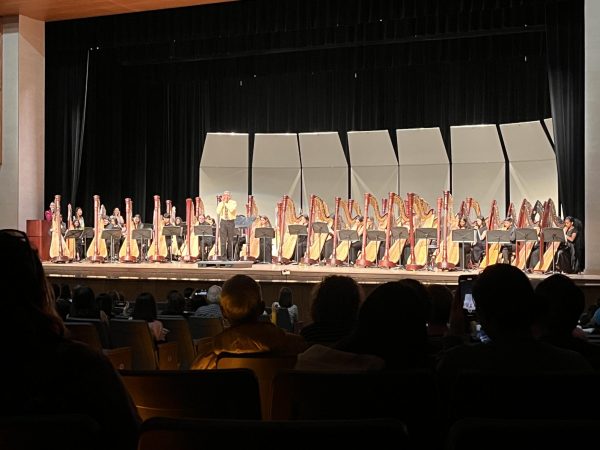Decisions Here, Decisions There, Course Decisions Everywhere
A plant, a spiral journal, and a ballpoint pen on a white desk
CENTENNIAL HIGH SCHOOL- Sometimes our course cards feel like they come way too early. Immediately after starting the second semester, we have to sit ourselves down and really think about what we want to be doing in eight months’ time. It can be a lot of pressure, and many students find themselves unsure about what choices to make. There’s no need to sweat if you’re feeling like this though; just consider these points while you decide in order to give yourself a sense of direction.
Keep the graduation requirements in mind
Frisco ISD has a graduation plan that students must follow, which lists the credits you need to acquire before you finish high school. Now, many of us know about all the core classes we need to take, but it’s also important to remember the other credits you’ll need to fill your electives with (ex: one fine arts credit, two world language credits). To see all of these, you can look at the graduation program chart on next year’s course catalog. It’s better to get these over with as soon as possible so you aren’t rushing to finish all your credits as a rising senior.
Take classes around your interests
Most people have an idea of what they’re interested in by the time they’re in high school, whether in a career sense or just a hobby sense. Taking classes surrounding your interests can be really fun, and it also shows colleges what you’re passionate about. It can also help you learn more about the things that interest you.
Don’t be afraid to experiment
Alternatively, don’t shy away from classes that you’ve never taken interest in before at all. One of the greatest things about the amount of elective options we have in Frisco ISD is that we have such a broad variety of classes, from agricultural mechanics to food science to mock trial. High school is about experimenting with different areas and finding out what interests you and what doesn’t. The decision about what you want to do in the future can be daunting, so your electives serve as the perfect way to learn more about your options.
Don’t load yourself up with AP courses
Many people place a strong emphasis on taking as many AP courses as possible in order to get a high GPA and rank. If you truly want to and believe you can handle it, there is nothing wrong with doing this. However, it is essential for you to know your limits. Don’t unnecessarily stress yourself with advanced courses and hurt your mental health. Taking AP classes is about challenging yourself in subject areas you’re interested in or want to further your knowledge in. Essentially, do what you know is best for you.
Inform yourself on what you’ll be learning in the class
Whether it be through the course catalog or someone who took the class, finding out what to expect in a class can be a significant factor in whether you decide to take it or not. For example, Journalism is listed as a technology credit, so one may think it has to do mostly with technology. However, if you asked anyone who took the class they could tell you that Journalism is more of a writing-based course.
Late arrival/early release option (juniors and seniors only)
For rising juniors and seniors, taking early release or late arrival is an option that seems really appealing. It can have multiple uses, whether that’s for a part time job, SAT/ACT classes, college applications, or if you just really need to sleep in. As long as you have all your required credits done or on their way to being done (minus your core classes), you can take one, or even two, periods out of school.
Hopefully, these tips help you create a great schedule that balances what you need to do and what you want to do. With this, you can sit back, relax, and look forward to the upcoming school year!

Hi! My name is Uswa Saeed. I'm currently a 12th grader at Centennial High School, and this is my third year writing for Cen10 News. Writing has always...

















